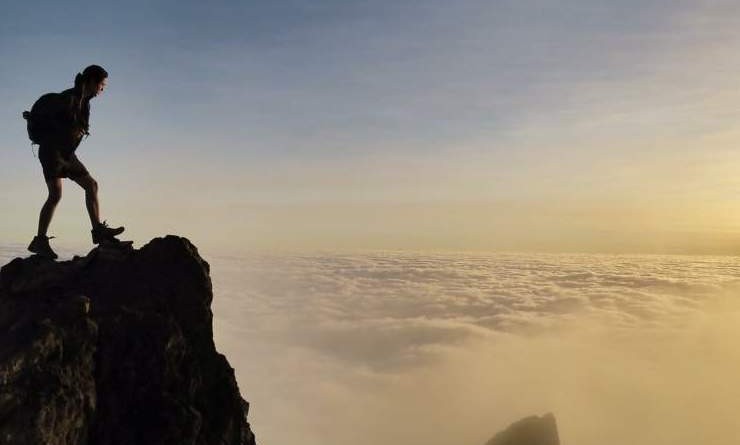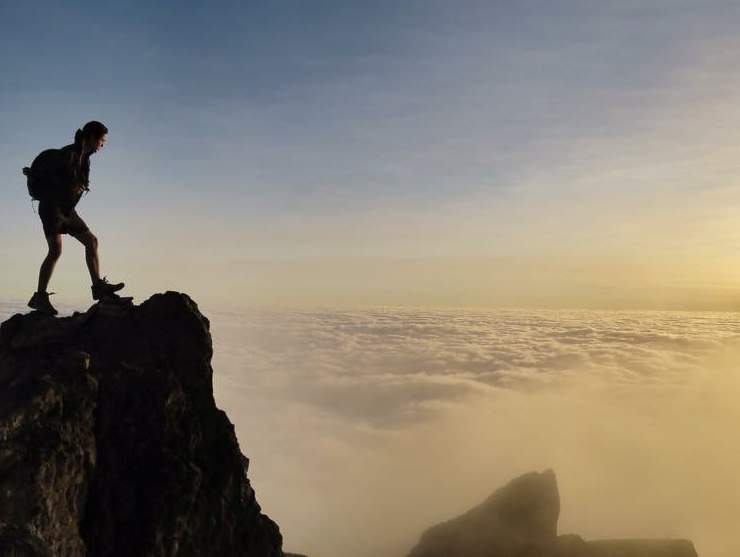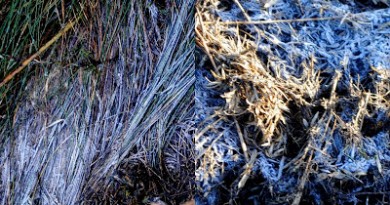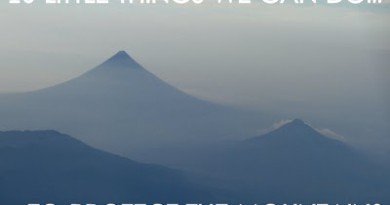Letter to a young mountaineer, II: “Why do accidents happen?”
Now, you tell me you are afraid, you have heard of an accident involving a hiker, and you realize that climbing mountains is not so safe after all. Suddenly, you start searching and it dawns upon you that so many people have died in pursuit of the peaks.Then you wonder out loud and ask me, why do accidents like that happen? who is to blame in these kinds of terrible things? Is hiking worth the risk? What should I do to prevent this from happening to myself?Questions like these emerge, inevitably, because as mortal beings living in an uncertain world, one of our most quintessential struggles is to make sense of things that are happening around us. The pursuit of knowledge is both an acknowledgment and rejection of our ignorance. And I have to confess that I, too, have no ready answer to these questions. Thus, I speak not as a mentor, but as someone who is a fellow learner, who just happens to be perhaps a little bit ahead in the trail.Your first question was, “Why do accidents like that happen?”. There are actually two questions within this, the first being “What is the ultimate reason for the occurrence of these things?”, which delves into a deeper, philosophical evaluation and the second being “What is the immediate cause of the accident?”.
Ultimate reason is something that you can only answer on the basis your worldview, which is your way of looking at things in life. The existentialist will probably see no need to make sense of it; things happen for no purpose at all (or, as the outcome of natural processes) and what matters is how you live the present moment. The fatalist will declare, “If it’s your time, it’s your time.” The Christian worldview, on the other hand, will hold that everything has a purpose, even if some things are hard to understand.
I believe in a God who is Lord of the mountains, and I entrust myself in His care, so I walk by faith in the trails as in life, doing my best in preparing for a climb, and leaving the rest up to Him. What is your worldview? Perhaps in examining your own beliefs, you can come up with your own answer to this question.
On the other hand, immediate causation is more amenable to objective inquiry. There are “acts of man” and “acts of God”, i.e. preventable vs. unexpected circumstances. Acts of man, I believe, are valid loci of questioning, although we must be very careful in examining them, because in matters of life and death, we cannot simply make a case study out of a life and a death; we cannot simply learn lessons from them, there is the risk of hurting those who were intimately involved. We must be sensitive. Still, it is useful to try to ask whether mistakes were made. Being unprepared for a climb is a common denominator in many disasters; to put it bluntly, it’s either you prepare to climb, or prepare to die. Also, acts of God, although unstoppable, can be predictable; a typhoon may be an act of God, but hiking in a typhoon is an act of man, and oftentimes, a foolish one at that.
Which leads to your second question, “Who is to blame?”. Here, I have to make a rebuttal: Is this really a right question to ask? Blame is an easy recourse when bad things happen, but the fallacy of blame is that in almost all circumstances, events are non-linear and cannot be taken out of their context, and taking events into their context almost always creates a situation when you cannot blame anyone without blaming everyone. On the other hand, the question of responsibility is, I think, a more constructive way of looking at it, and it must always be coupled with a positive question: “What can we learn from the situation?”
So let us deal first with the question of responsibility. If someone gets killed, or injured, while hiking, is he or she responsible?
Of course, we will still have to look at this on a case to case basis; there are acts of neglect and deliberate acts of violence. But if we can exclude these clear-cut instances where blame is valid, we are left with the vast majority of situations which nature comes into play, and here, by the mere fact of being there, the individual shares some responsibility.
Do not look for waiver forms among hikers; your first footstep in the trail is the only waiver you need: by making that step into the wild, you enter into the unknown, and acknowledge that there are risks involved, however minimal. Remember this: where there is beauty, there is danger.
The lesson here is that whenever you climb, be responsible for your own actions. Do not fully depend on the organizer, although he or she will also have her own responsibility, which I will talk about in the next paragraph. As an individual hiker, you cannot simply and blindly follow the organizer or the leader of your climb; even if he says that you can do it, if you feel otherwise, be the judge of your own capabilities. And the organizer is not perfect, at times, he will forget to remind you of the things you have to bring, the clothes you have to wear, the skills you have to learn: have the initiative to learn these things, if not from him, then from others.
What about the organizer? Is he or she responsible? Once again, we evaluate each case, and there are instances too when the organizer can be responsible. Prior to a climb, he must have informed the participants of what to expect, what to bring, what to prepare for. He should check the weather forecasts, even though they may not necessarily translate to the actual weather that will unfold. Even the best organizer cannot prepare for the unpredictable. Still, he must do his very best.
Finally, we can also look at the park authorities themselves. Are there instances, too, when they are responsible? The answer is yes, too: if there are dangerous trails, then they should warn the hikers about it. If they are supported by the government, or paid by the hikers, then it is actually their job to be responsible about maintaining the safety of the trails, telling hikers what paths to avoid, and which paths to take. We must clamor for them to their job.
The list goes on, and at times, even I get blamed for people getting lost, saying that I failed to warn them that there is a possibility of getting lost. You see, the problem of blame is that it leads people away from the issue of their own responsibility.
So we have shown that the individual, the organizer, the park authorities can also be responsible in certain situations. There is, then, shared responsibility among them, which ought to be an invitation to work together to make things safe for everyone, to minimize the chance of accidents happening. This is teamwork. In hiking, many people climb in groups but you must strive to climb as part of a team. It is possible to be a solo climber within a group climb, but not within a team climb. As part of a team, be prepared to share the responsibility of preparing for the climb, and anticipating whatever problems you may face.
And where there is a risk, the people who confront that risk must be aware that it exists, so that they can be prepared to prevent it, or, in the worst case, confront it.
Is hiking, then, worth the risk? You can find the answer at the summit. Don’t you wonder why whenever people reach the peak, there is the urge to shout “Yes”? I believe that people say yes in response to this question. Indeed, the exclamation of “Yes!” atop a summit is both an affirmation of life and a response to all doubts and fears. Yes, hiking is worth the risk, and by the way, so is life.
And finally, you ask “What can I do to prevent this from happening to myself?” This is the most practical, most useful question to ask. The answer is simple, even though it can quite tedious: Learn the basics of hiking! Even the beginner knows how to climb, because it is just walking, but what you need to learn is what to do when the trail is gone, and you are lost, or someone is in trouble.
You need to know how to respect the environment, how to respect other hikers, and how to take care of yourself in times when there is no one else to help you. And you will need to know how to take care of others when there is no one else to help them. You will need to find the way if you get lost, and if you cannot, then you will need to know how to let others find you. You need to know what to bring, not just when the sun is up, but also when the storm is furious, and you have to protect yourself from the elements.
How will you learn all these? Have the humility to ask help from someone more experienced than you; join a club whose members are sincere in their passion for the mountains, and their passion to impart what they know.
And lastly, consider the people you climb with. Who will risk his life for you, when there is a raging river and only a strong hand can lift you up from the currents? And who will you risk your life for, when this situation happens to another? Build strong relationships with the people you climb with, strive to achieve friendships that endure, and let every climb be a fellowship among you, so that when trouble comes, you will confront it together.
Yet, I must tell you that these forms of prevention are not perfect. Even the most prepared hiker can die, anytime (but then, so can any person, even in his or her bedroom). I do not say this to scare you. In fact, this is an invitation to make the most of life, uncertain as it is. We cannot decide when a typhoon will come, but we can decide when we will come upon a mountain.
Fortis fortuna valorum: fortune favors the brave. There is a thin line between courage and recklessness, but courage is a time-honored virtue that changed the world; it is something that you can learn and apply on the mountains, and even beyond: I would wish you to excel not just in your hiking, but in your pursuit of calling in life.
Your only enemy is time; as time flies, so must we soar, in pursuit of our talents and passions. Thus, we cannot allow ourselves to be defeated by circumstance; we must wrestle with chance and fight with all we’ve got. Uncertain as life is, each step we take up a mountain is a decision to follow a path, which becomes a journey, which in turn becomes your destiny.
Indeed, the element of uncertainty can be reduced to the limited nature of life, which is an invitation to make the most, and to relish each day walking in the trails. Death, however dark the thought of it, is the only way by which life can be illuminated. Mountains can only be high because there are seas beneath, and just as we measure mountains against sea level, so can we measure our days against the waves of life: will we get carried away, or shall we rise up to the challenges that confront us?
Going up means never giving up.
Personal essays by Gideon Lasco
I: A letter to a young mountaineer
II: Why do accidents happen?
III: Of doing and loving
IV: A difficult situation
V: Wise words from an old man
VI: The Philippines that I love
VII: The calling
VIII: The girl who climbs mountains
IX: A mountaineer’s legacy
X: What beginners can teach us
XI: The friends inside your backpack
XII: Unfollowing one’s self in social media






Leave a Reply
16 Comments on "Letter to a young mountaineer, II: “Why do accidents happen?”"
a very long essay but not boring, you have the gift in writing Gideon. I felt the energy and spirit in climbing as I read along.
My favorite line, Is climbing worth the risk? You will find the answer at the summit. Definitely.
Mabuhay ka Gideon, continue to inspire and educate the youngs to be a responsible mountaineer.
Sir,
I too was involved in an accident recently. Not from hiking but from rock climbing. It happened just this April 27. A right thigh broken and some bones in the left foot. The doctors put steel rods to repair them. Now in bed and recovering. I don't know if ever I can come back to the mountains. Would love to hear stories of people who has recovered and come back. – Joel Syyap
Sir,
I too was involved in an accident recently. Not from hiking but from rock climbing. It happened just this April 27. A right thigh broken and some bones in the left foot. The doctors put steel rods to repair them. Now in bed and recovering. I don't know if ever I can come back to the mountains. Would love to hear stories of people who has recovered and come back. – Joel Syyap
Sir,
I too was involved in an accident recently. Not from hiking but from rock climbing. It happened just this April 27. A right thigh broken and some bones in the left foot. The doctors put steel rods to repair them. Now in bed and recovering. I don't know if ever I can come back to the mountains. Would love to hear stories of people who has recovered and come back. – Joel Syyap
Sir,
I too was involved in an accident recently. Not from hiking but from rock climbing. It happened just this April 27. A right thigh broken and some bones in the left foot. The doctors put steel rods to repair them. Now in bed and recovering. I don't know if ever I can come back to the mountains. Would love to hear stories of people who has recovered and come back. – Joel Syyap